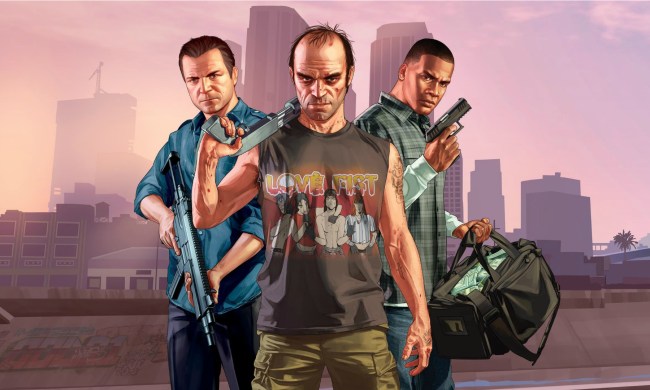Most city-building games play out the same way. You start with an empty stretch of land and slowly start filling it up with roads and houses. In no time, that blank canvas becomes a thriving metropolis filled with shops, skyscrapers, and power plants that are most assuredly doing a number on the atmosphere. It’s rare that we ever get to take a different approach, using that plot of land to create spaces that aren’t explicitly for humans. That’s where Terra Nil swoops in.
Developed by Free Lives and published by Devolver Digital, Terra Nil is a total inversion of the usual city-builder template. Rather than creating thriving cities, the goal is to help nature reclaim dead stretches of land. That’s initially accomplished through futuristic tech, but the end goal is to remove all traces of human life entirely, leaving only the flora and fauna.
That creative loop makes for an ingenious anti-city-builder that fuses strategy and puzzle together into one environmentally reflective package.
A new world blooms
The big difference between Terra Nil and something like SimCity is that the former isn’t an endless sandbox game. The core campaign tasks players with restoring four distinct biomes using a set of tools built around the area’s climate and makeup. That makes it a bit more of a puzzle game than a traditional city-builder, as the goal is to walk through a set of restoration objectives while managing a universal resource used to create new buildings.
Each mission has the same general structure: start with a square landscape, grow some basic greenery, expand that into a few distinct plants, and introduce a few animals. Once that’s all completed, it’s time to recycle every single piece of man-made equipment and leave without a trace. The puzzle comes from figuring out how to make all that happen while starting with nothing, which gives it the same satisfying builder loop the genre is known for.

Take its first mission as an example. I start with an empty expanse of dirt and rocks – nothing more. I start by building some power-generating windmills and placing some toxin scrubbers within its range to cleanse the land. When I add a greenery, it waters that land to create fertile greenery that I can build on. Once enough land has been reclaimed, I can start shaping the biome. Irrigators can be converted to hydroponiums to create wetlands, while beehives can be placed in trees to pollinate a field of flowers. Further puzzling has me creating controlled burns to create forests on nutritious ash or manipulating the climate to bring on rainfall.
What I really admire here is that Terra Nil doesn’t just feature a single set of tools that it repeats through missions. All four areas need to be handled in entirely different ways depending on their makeup. One volcanic area has me drawing on the power of magma to create fields of rocks. Another has me depositing coral reefs into the ocean via a series of monorails. Each restoration project is entirely distinct from one another, teaching players the differences between how life is created and maintained in varied climates.
The final phase is where I get the most satisfaction. When all objectives have been completed, I’m left with a beautiful landscape that’s littered with machines. To finish the job, I need to break down every single one and get the materials returned to a ship that’ll take it all off the planet. That additional puzzle further subverts the genre by having players break down an hour’s worth of careful work to show what they’ve really built: a thriving, self-sustaining ecosystem. Terra Nil further emphasizes the magnitude of that accomplishment by giving players the option to stop and “admire” the final product when it’s done.

With a handful of missions (and a set of extra ones after credits), Terra Nil is a quick game that can be finished in five or six hours. Part of me was left wishing it had some sort of true sandbox mode where I could craft larger, more elaborate landscapes — but then I’d be missing the point. The beauty of the project is that it calls on humans to keep their impact on nature to a well-considered minimum. The goal is to aid an ecosystem to help it grow, but leave it be once it’s able to sustain itself. An endless campaign where I keep building miles and miles of windmill-dotted fields wouldn’t fit that objective.
Terra Nil scratches several itches at once. It’s a SimCity-like game that plays on my inherent drive to build, a Zen strategy game in the vein of Dorfromantik, and a thoughtful puzzler that rewards me for solving ecological challenges. All of that makes for an inventive indie that considers how the rules of a genre can be bent to enforce its thesis about the natural world. Give it a try, and then go sit under a tree and consider how astonishing it is that the forest around it operates with such machine-like efficiency all on its own.
Terra Nil launches on March 28 for PC and mobile devices via Netflix. Free Lives says that a portion of Steam profits will be donated to the Endangered Wildlife Trust.



